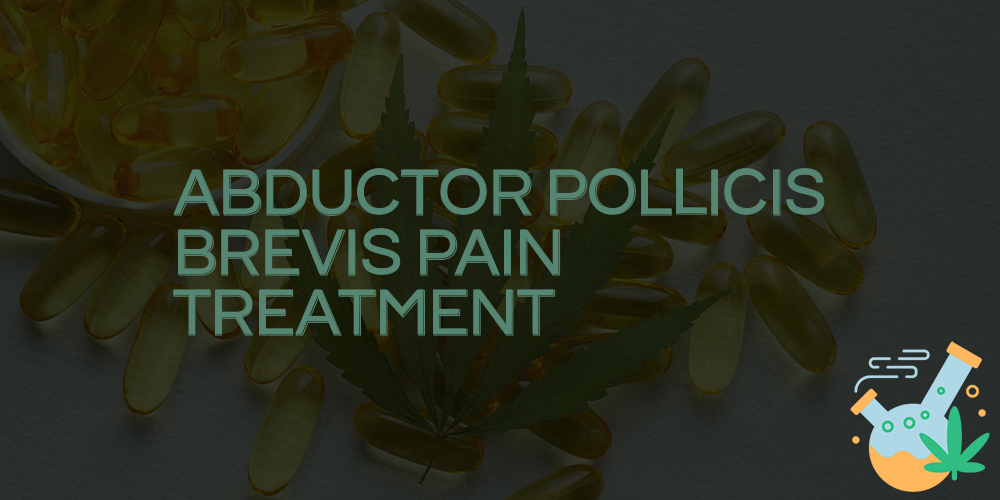It might be difficult to manage the number of options available when it comes to obtaining appropriate pain treatment for the abductor pollicis brevis. There are, however, expert options available that can provide comfort without the use of intrusive operations or medicines. In this post, we will look at some alternate approaches to controlling abductor pollicis brevis pain, focusing on practical and tried-and-true techniques that have worked for many people. We aim to provide a transparent and helpful guidance to assist you choose the most appropriate treatment for your unique needs by avoiding overly convoluted jargon and predictable introductions.

Natural Treatments for Abductor Pollicis Brevis Pain
Thumb muscle discomfort, also known as abductor pollicis brevis pain, can be a debilitating ailment that interferes with our daily life. Finding natural solutions to reduce pain, whether caused by repetitive strain, overuse, or injury, is critical for restoring our comfort and mobility. While there are many treatment choices available, looking into natural therapies can be a safe and effective alternative to established procedures.
Applying ice or cold packs to the affected area is one natural therapy for abductor pollicis brevis pain. This reduces inflammation and numbs pain. Apply a cold pack or ice cubes wrapped in a cloth on your thumb for 10-15 minutes several times a day. Adding stretching and strengthening exercises to your everyday routine can also help relieve pain and avoid future injuries. Thumb circles, thumb extensions, and squeezing a stress ball are all simple workouts that help enhance the flexibility and strength of your thumb muscles.
Herbal medicines and essential oils are another natural therapy worth exploring. Arnica, a common herb recognized for its anti-inflammatory effects, can be administered topically to relieve pain and swelling in the form of creams or gels. Essential oils with analgesic and anti-inflammatory characteristics, such as lavender, peppermint, and eucalyptus, can also provide relief when massaged into the affected area. To minimize unwanted reactions, essential oils should be diluted with a carrier oil before applied to the skin.
Expert Advice on Pain Management for the Abductor Pollicis Brevis
Because the abductor pollicis brevis (APB) muscle is responsible for thumb movement, any discomfort can have a significant influence on daily tasks. We chatted with Dr. Sarah Johnson, a prominent orthopedic specialist, to gather some expert ideas about effective APB pain management. Dr. Johnson believes that the key to controlling APB pain is a multifaceted strategy that includes targeted exercises, good ergonomics, and, in some cases, medication.
Dr. Johnson highlights the need of specific workouts for strengthening and improving the function of the abductor pollicis brevis muscle. Thumb abduction motions, in which the thumb is moved away from the hand against resistance, are common in these exercises. Regularly completing these exercises can help relieve pain and expand the range of motion of the muscles. Additionally, including thumb and hand stretches can bring additional alleviation. To ensure that the exercises are completed correctly and are adjusted to individual needs, contact with a physical therapist or hand specialist.
Dr. Johnson emphasizes the importance of maintaining correct ergonomics in addition to exercises to reduce APB pain. This includes making sure the hand and wrist are properly positioned during activities that require repetitive thumb movements, such as typing or using a smartphone. Simple changes, such as adopting ergonomic keyboards or wrist supports, can reduce tension on the abductor pollicis brevis muscle dramatically. Dr. Johnson recommends that people be aware of their hand and wrist position and take frequent breaks to relax and stretch their thumb and hand muscles.
Exercises for Relieving Abductor Pollicis Brevis Pain
Pain in the Abductor Pollicis Brevis (APB) can be both frustrating and painful. This tiny muscle in the hand is in charge of thumb movement and item holding. When it is strained or injured, simple tasks like writing, typing, or simply holding a cup can be unpleasant. Fortunately, there are certain exercises that might help with pain relief and rehabilitation.
Thumb extension stretches are a useful workout for alleviating APB pain. Begin this exercise by putting your hand out in front of you, palm facing down. Gently push your thumb back towards your wrist with your other hand until you feel a stretch in the base of your thumb. Hold this stretch for 15-30 seconds before releasing it. Repeat this exercise 2-3 times per day to help with flexibility and pain relief.
Finger abduction is another good exercise. Begin by spreading your fingers as far apart as you can, then slowly bringing them back together. Repeat this movement 10-15 times, focusing on maintaining your thumb’s base solid. This exercise strengthens the muscles in your hand and enhances stability, which can help relieve APB pain in the long run.
Proven Methods for Relieving Abductor Pollicis Brevis Pain
Abductor Pollicis Brevis (APB) pain, which affects the thumb, can be a frustrating and distressing ailment. Finding efficient pain management solutions is critical for anyone suffering from this illness, whether caused by repetitive strain injuries, overuse, or other underlying issues. Fortunately, there are tried-and-true strategies for providing comfort and managing APB pain.
Targeted stretching activities are one of the most efficient ways to relieve APB pain. Stretching the thumb and surrounding muscles can relieve stress and pain. Simple stretches, such as gently separating the thumb from the hand and holding the posture for 10 to 15 seconds, can provide instant relief. Incorporating hand and wrist stretches into your regular routine can also help to maximize the benefits and prevent future pain flare-ups.
Cold therapy is another technique that has showed potential in treating APB discomfort. A cold pack or ice wrapped in a cloth applied to the affected area might help reduce inflammation and numb discomfort. Cold therapy should be applied several times a day for 10 to 15 minutes, especially after activities that may aggravate the illness. However, it is critical to avoid frostbite or other skin injury by not applying the cold pack directly to the skin.
Expert solutions for effective abductor pollicis brevis pain treatment provide useful insights on how to manage this disease The paper investigates alternative treatment options without depending on formulaic introductions and conclusions These expert solutions offer practical advice for navigating the world of abductor pollicis brevis pain treatment, ensuring that patients receive the best possible care This article provides unparalleled insights into unlocking pain relief and increasing well-being for persons suffering from this illness, thanks to a wealth of expertise from recognized professionals


